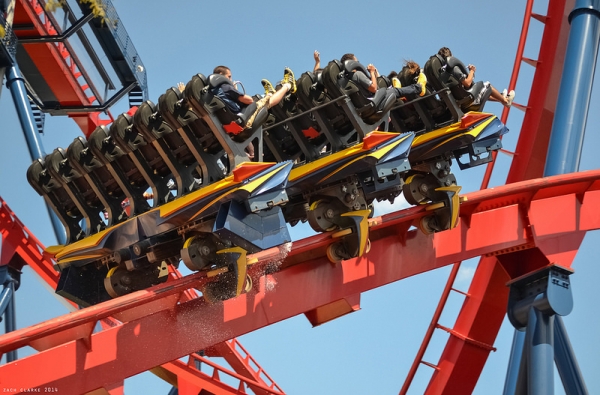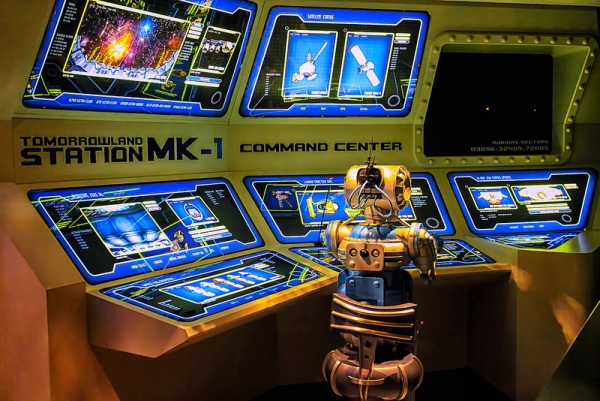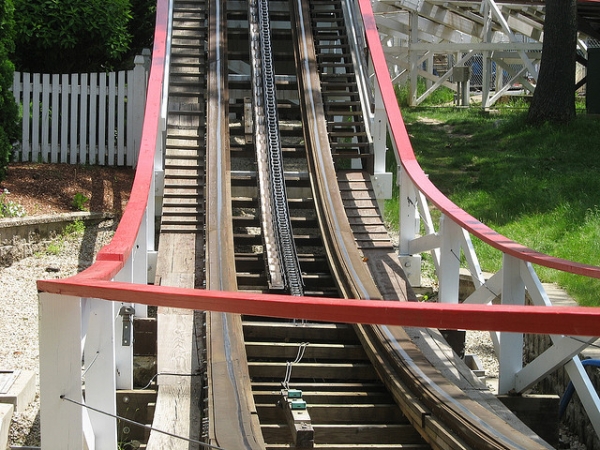2. Roller coaster safety triggers
The real fear factor involves roller coasters since there is the occasional news story of a serious injury. Mathematically, the odds of such an injury are beyond remote. Statistically, you have a one in 24 million chance of suffering an injury that requires hospitalization. The odds of death are 31 times less likely than that. So, you’re roughly as likely to win the lottery as die on a roller coaster. The thrill of danger is largely imaginary. Losing a hat is your realistic worst case scenario, recent events at Fury 325 notwithstanding.
How do theme park attraction designers create such complex structures while maintaining safety? In the halcyon days of roller coasters, a dude with a lever and a brake controlled the action. Today, we enjoy a much more refined and thereby safer ride.
The key is the programmable logic controller employed in many phases of the attraction. Ordinarily implemented in sets of three, these devices monitor all aspects of coaster carts. They assure property spacing between the vehicles, which is critical since a fender bender at 60 MPH or more would be unpleasant. They also regulate the speed of the cart, guaranteeing that you never exceed the velocity determined as too dangerous for the track layout. Those logic controllers are hard-wired via Ethernet cables or connected via wireless to an orchestrated system of computer arrays in a hidden room near the ride.
If a ride fails, the most likely reason is that a failsafe has triggered due to the programmable logic controllers returning an error. This happens more often than you may expect. Think about it in terms of your own computer, tablet, or cellphone. How often have you seen your device get stuck, forcing a reboot? Since most attractions are now run a gigantic network of computers, they are susceptible to the same issues, simply on a larger scale.
For this reason, programming the attraction controllers requires much cleaner and more easily maintained code than for your standard operating system. When something goes wrong with the system, RIDE ERROR or the like appears on the display, which means a shutdown. These issues are the ones that most frequently force park operators to make uncomfortable PR statements like, “We have no idea why the ride got stuck.” When they say this, it’s not because they want to do so but simply because they’re being honest.
The next most likely cause of shutdown is the deployment of ride sensors on tracks throughout the attraction. Many major rides have more than 100 sensors throughout the course, all relaying information back to the programmable logic controllers. They evaluate coaster positioning on the tracks, the locking pins on the tracks, and the hard count of cart positions.
The sensors complete most of these calculations in the blink of an eye and relay the information. A fail safe occurs in an instance such as improper locking pins or an inability to see every row of a coaster cart. The latter instance returns an incorrect count that identifies there is a problem to the sensor, which passes this information along as bad news to its boss back at the control hub.
The beauty of the complex computers installed to control a ride is that they are much more efficient by nature. They can control coaster carts completely, straight down to the velocity. They manage it to a much more precise degree than human operators would, too. This leads to the final error state that can shut down a ride. If calculations determine that the ride is running either too fast or too slow, the passengers are endangered. So, the system will try to change the speed of the cart on the fly. If that fails, a shutdown will occur.
Such situations are not exclusive to later portions of the ride, either. Roller coasters that require tremendous propulsion at the start to reach the speed needed to complete the journey also have fail safes. These occur when the attempt to put a resting object in motion fails to transpire in the requisite amount of time. Thinking of it in terms of Fury 325, that would mean the cart needed to boost to a specific speed in order to clear the first mountainous height. Once the system determined that this couldn’t happen, a shutdown would occur.
Every time you ride a modern roller coaster, there are constant calculations made by the technology at literally every turn…and the straightaways, too. The I/O is checked between multiple processors, all of which must confirm that the ride is fully operational in order to allow it to continue. So, if you do wind up stuck on a ride that has failed, the explanation is that a computer check has returned a RIDE ERROR message, and unless it’s a random computer glitch, you should be grateful that it’s happened. It’s possibly saved you from becoming a wildly unlikely and truly unfortunate amusement park statistic.




Add new comment